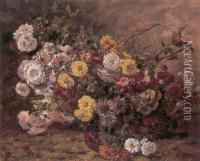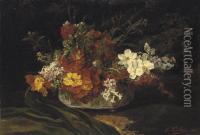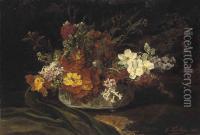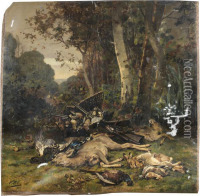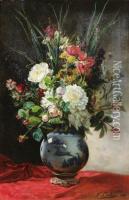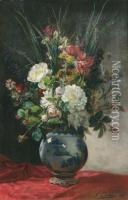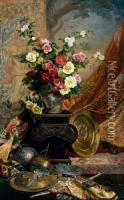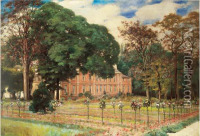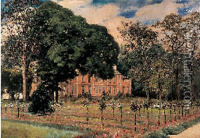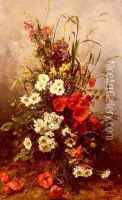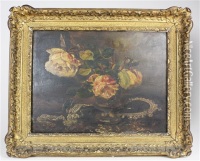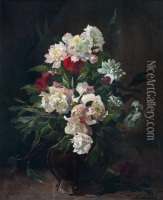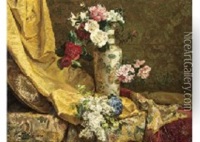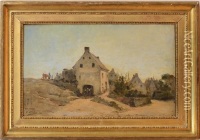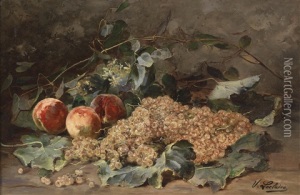Victor Leclaire Paintings
Victor Leclaire was a French painter born in Paris, France, in 1830. He emerged as a notable figure in the 19th-century French art scene, primarily recognized for his contributions to still life and landscape painting. Leclaire's artistic journey began under the guidance of his brother, Louis Leclaire, who was also an accomplished painter. This early mentorship played a crucial role in shaping Victor's artistic direction and honing his skills in depicting natural and domestic scenes with a remarkable sense of realism and attention to detail.
Victor Leclaire's work is characterized by its vivid realism, intricate detail, and the luminosity of its colors. He was particularly adept at capturing the texture and quality of flowers and foliage, making these elements a central feature of many of his still life paintings. Beyond still lifes, Leclaire also ventured into landscapes and genre scenes, applying the same level of precision and care to these subjects as he did with his floral compositions.
Throughout his career, Leclaire exhibited his works at various prestigious venues, including the Paris Salon, where he gained significant recognition and accolades for his contributions to French art. His paintings were well-received by both critics and the public, who admired his ability to infuse life and vibrancy into everyday scenes and objects.
Despite his success, Victor Leclaire's life and career were relatively short-lived. He died in 1885, at the age of 55, leaving behind a legacy that, though not as widely known as some of his contemporaries, made a lasting impact on the French art scene of his time. Today, his works are preserved in several museums and private collections, where they continue to be appreciated for their beauty and technical skill.
